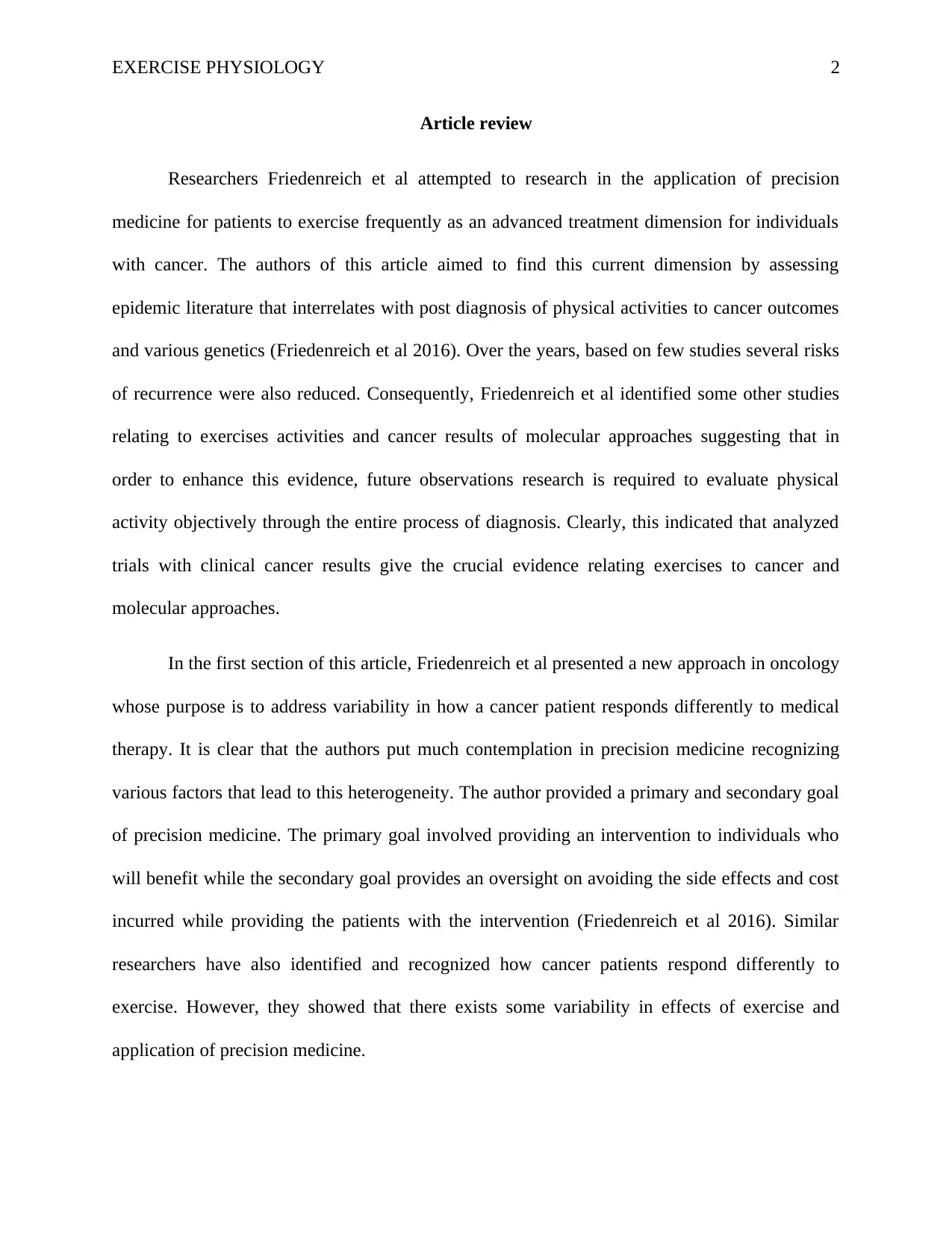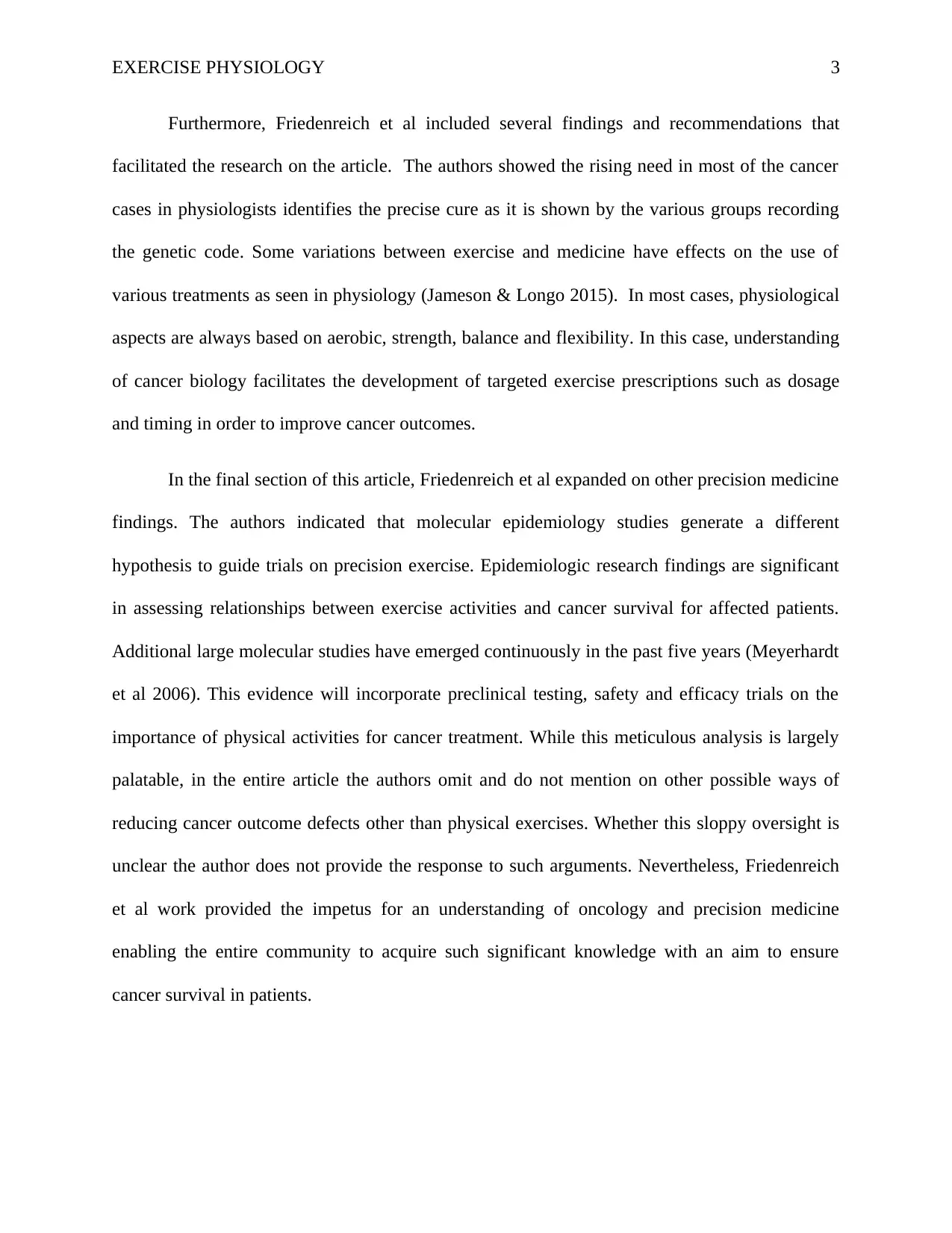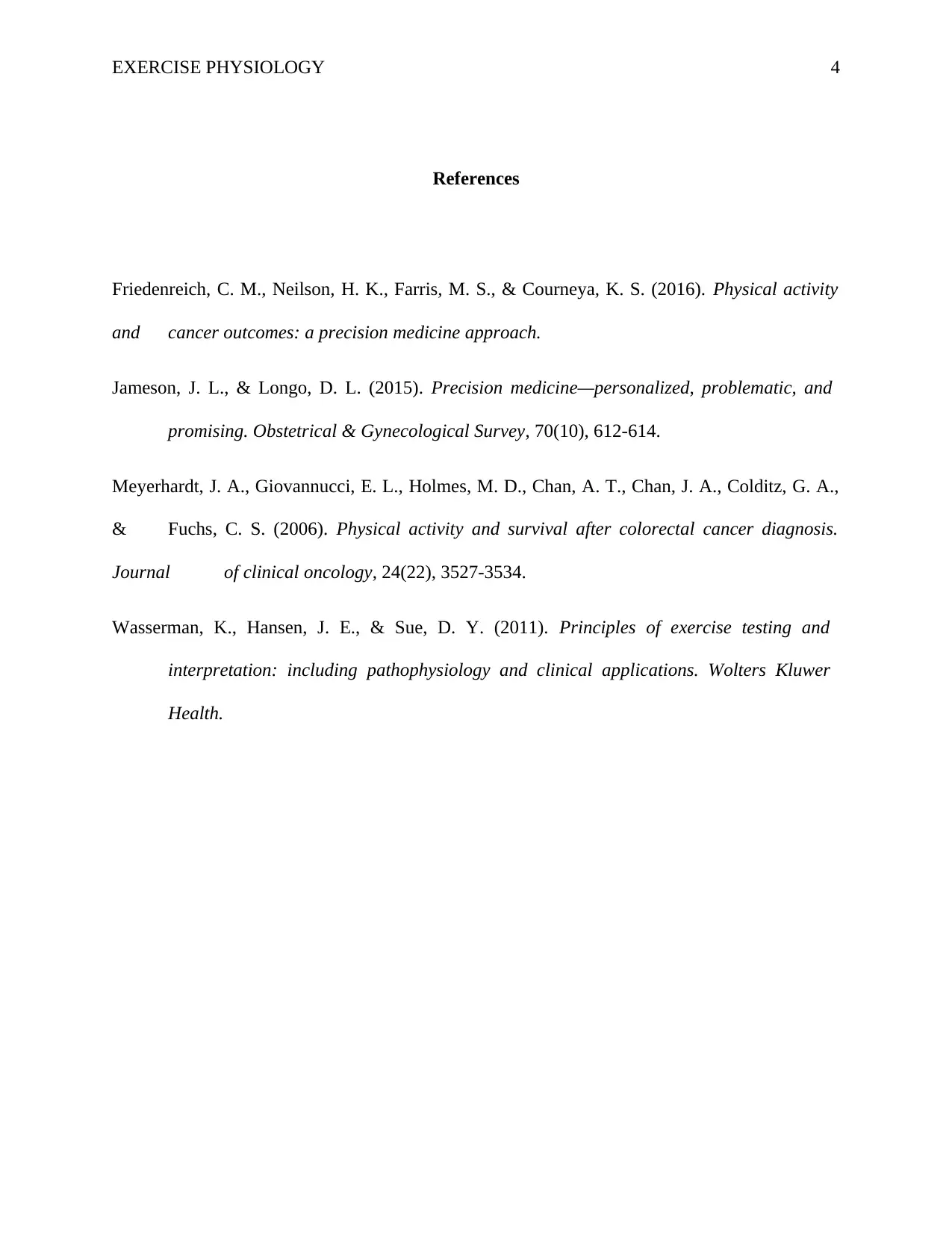Exercise Physiology 2: Article Review of Friedenreich et al. on Cancer
VerifiedAdded on 2021/05/30
|4
|775
|208
Report
AI Summary
This report is an article review of Friedenreich et al.'s research on the application of precision medicine for cancer patients through exercise. The study examines the relationship between physical activity, cancer outcomes, and molecular approaches, highlighting the need for further research to objectively evaluate physical activity throughout the diagnosis process. The authors discuss precision medicine's goals, addressing patient variability in response to medical therapy, and the potential of targeted exercise prescriptions. The review also mentions other researchers identifying the effects of exercise and application of precision medicine, along with findings and recommendations that facilitated the research on the article. The article expands on molecular epidemiology studies and their role in guiding trials on precision exercise. While the authors provide valuable insights, the review notes the omission of other potential ways of reducing cancer outcome defects. The analysis emphasizes the importance of exercise in cancer treatment and survival, providing significant knowledge to the community.
1 out of 4











![[object Object]](/_next/static/media/star-bottom.7253800d.svg)